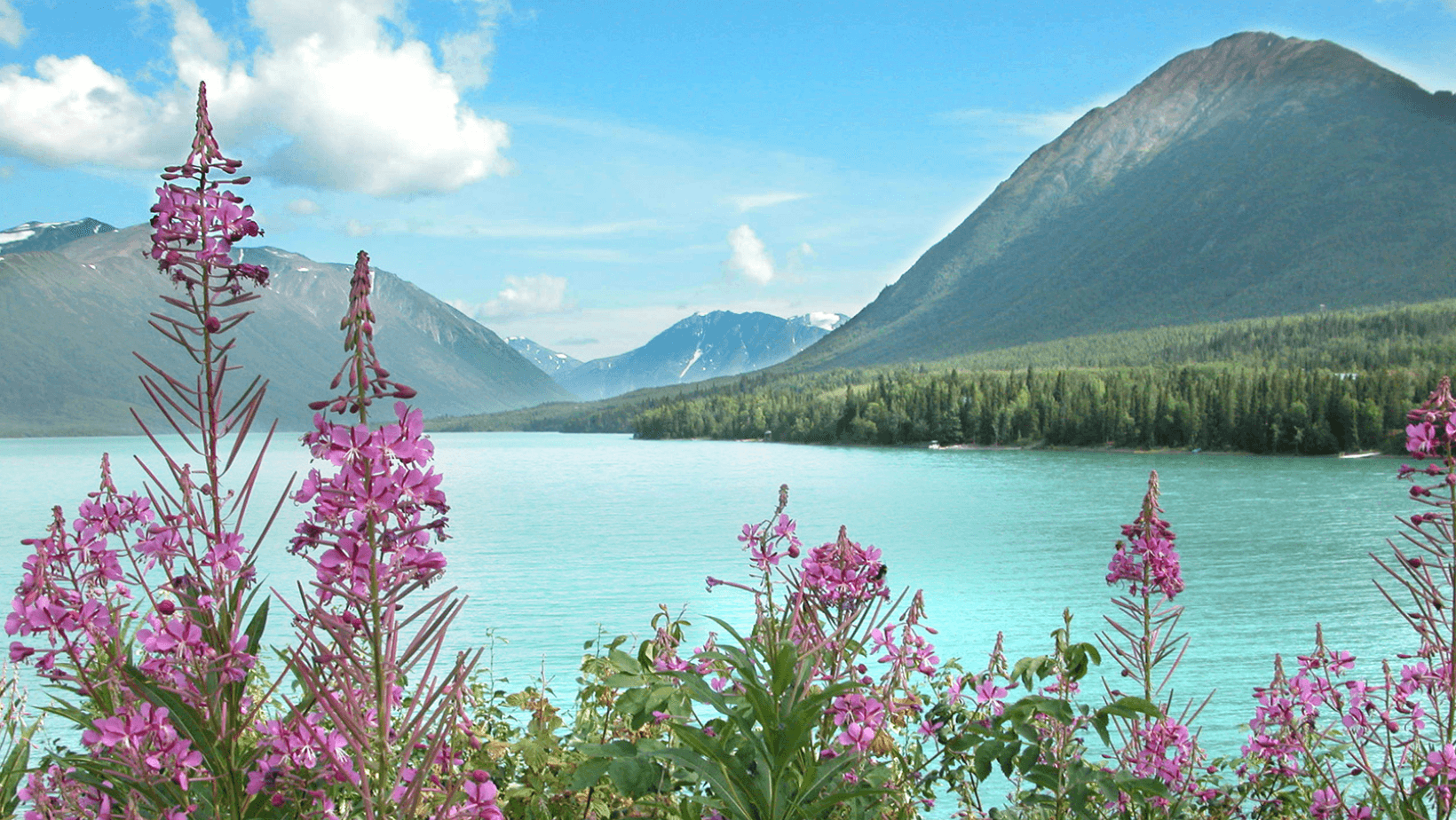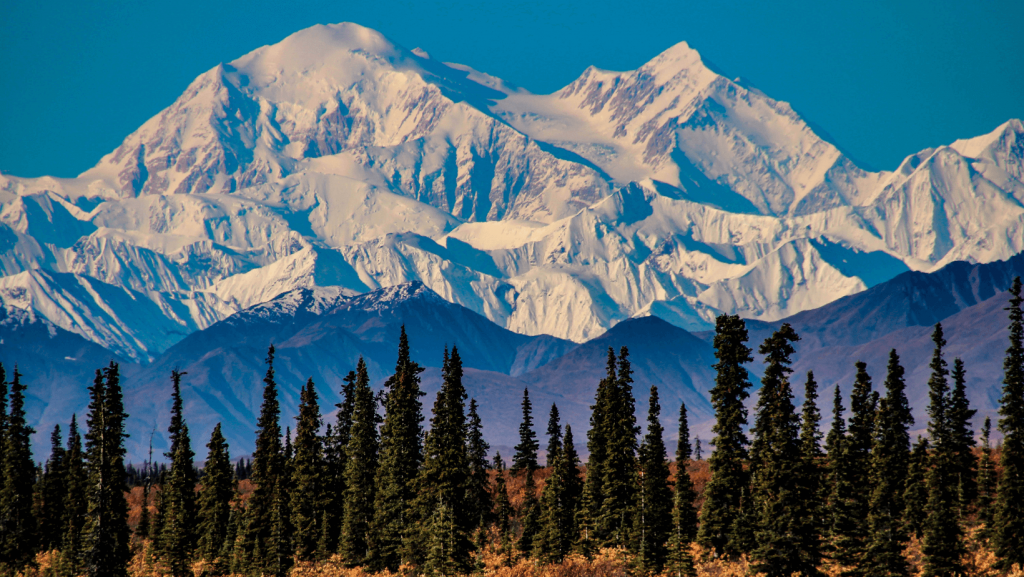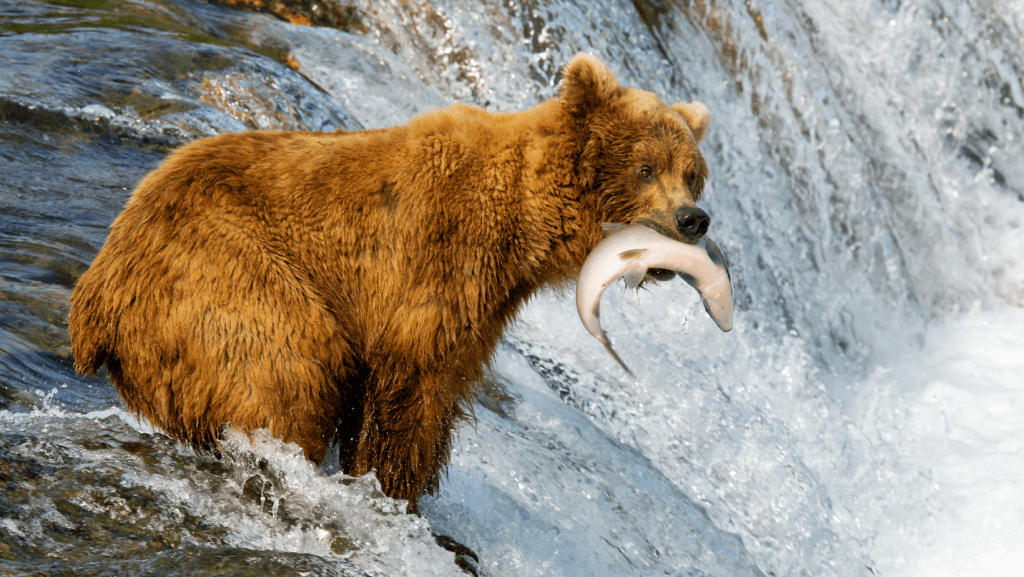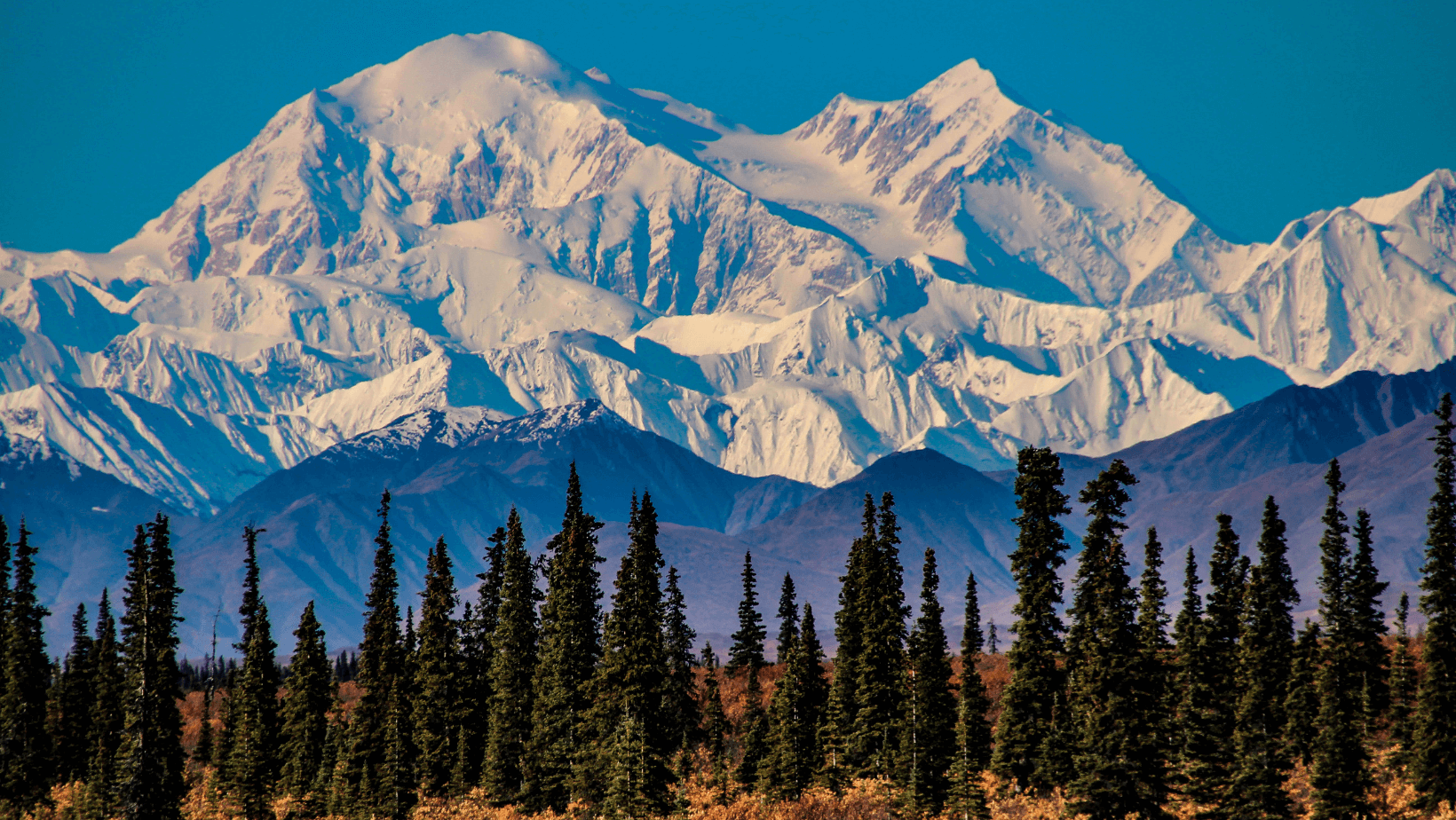
Alaska Basics
Alaska is found in the extreme northwest of the North American continent. The name comes from the Aleut word alaxsxa or alaxsxix, meaning “mainland” or “great land.” Because the 180th meridian line of longitude passes through the state’s Aleutian Islands, the westernmost portion of the state is actually located in the Eastern Hemisphere. This means that Alaska is technically in both hemispheres.
The Alaska Peninsula is the largest peninsula in the Western Hemisphere. It is surrounded by numerous bodies of water, including the Beaufort Sea and the Arctic Ocean to the north, the Gulf of Alaska and the Pacific Ocean to the south, the Bering Strait and the Bering Sea to the west, and the Chukchi Sea to the northwest. The state is central to the great circle route connecting North America with Asia by air and sea and is equidistant from most of Asia and Europe. This central location has made Alaska militarily significant since the Japanese invasion of the Aleutians during World War II.
Alaska is the largest state in the US by far. At roughly 665,400 square miles, it has an area greater than Texas, California, and Montana combined. For comparison, it’s over twice the size of the second-biggest US state (Texas) and about 425 times larger than the smallest state (Rhode Island).

Notable Features
Of the 20 tallest mountains in the United States, 17 are in Alaska. This includes the highest peak in North America, Denali, which is 20,320 feet above sea level. In 1896, the name Mount McKinley was applied to the mountain in honor of William McKinley, who was elected president of the US later that year. Efforts began to restore the mountain’s original Native American name, Denali, in the mid-1970s. This was originally met with opposition, but usage of the mountain’s original name became increasingly common and in 2015, it was officially renamed Denali.
Alaska is also home to an estimated 100,000 glaciers. These range in size from tiny cirque glaciers to huge valley glaciers. The largest is Malaspina at 850 square miles. In total, roughly five percent of the state, or 29,000 square miles, is covered by glaciers.
The state boasts many bodies of water as well, including more than 3,000 rivers and over 3 million lakes. Of Alaska’s rivers, the Yukon River is the longest. At almost 2,000 miles long, it is the third-longest river in the US. The largest lake is Lake Iliamna, which encompasses over 1,000 square miles.

Wildlife in Alaska
Alaska is home to diverse wildlife, including the state’s so-called “Big Five” animals – bears, moose, Dall sheep, wolves, and caribou. The most commonly seen of these animals is the moose, with an estimated 200,000 in the state. Moose can be seen year-round, and are often spotted near cities during the winter when their primary food sources are harder to find in the deep snow.
In addition to the Big Five, Alaska boasts the densest population of bald eagles in the US. Over 30,000 bald eagles live in the state. They thrive on the abundance of fish, their main food source. For those looking to spot a bald eagle, they are most commonly seen in Southcentral Alaska and the Inside Passage region.
Many of the state’s famous animals are found on land, but lucky visitors can also spot large marine mammals like humpback whales, orcas, and gray whales. Humpback whales are commonly seen in the summer when they migrate north to feed in the state’s nutrient-rich waters. Gray whales are also found in the warmer months and are the first migrating whales to reach Alaska each spring.
Weekly Trivia
Enter your guess to reveal the answer.

